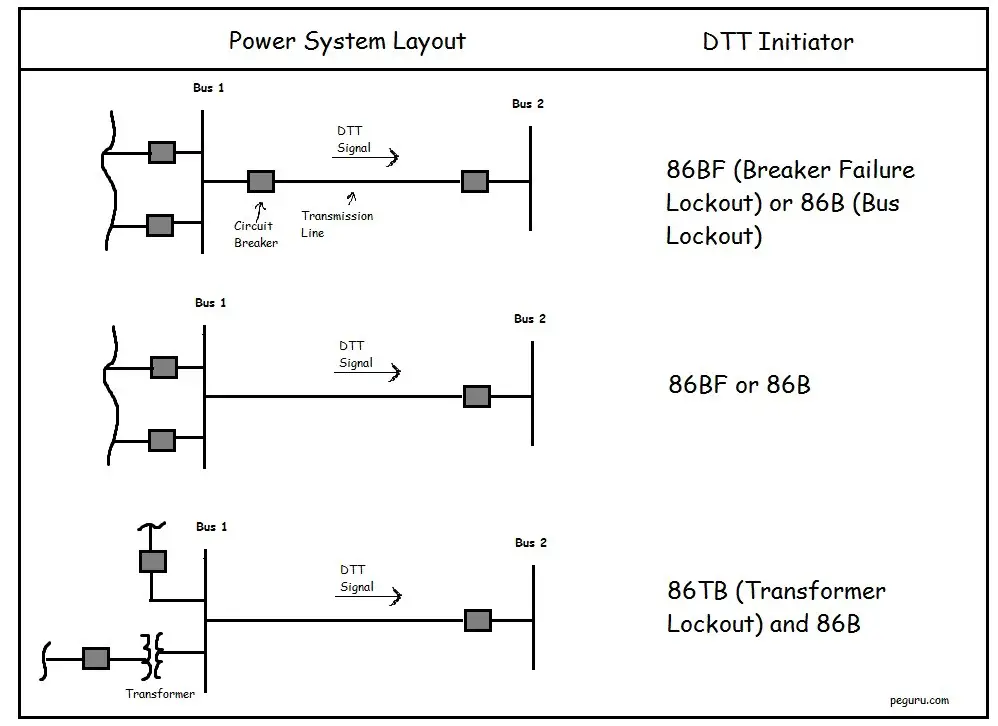Direct Transfer Trips (DTT) are initiated from station relays when a severe event occurs in the substation. Some of these events are breaker failure, bus faults, transformer failure, etc. A lockout relay (86 device) is assigned to each event.
The lockout relay in the station is pretty essential. When operated due to any of the events indicated above, it trips all the breakers connected to it. So for example, for a bus fault, the bus differential relay will operate the bus lockout relay which will trip and blocks re-closing of all the breakers connected to the bus. If the breaker is at a remote location and can’t be physically wired, a DTT signal is sent to it via the protective relays using the pilot channel.
The figure below shows which all lockout relays are typically used to initiate the DTT. The substation design affects this. For example, a ring bus substation or a breaker-and-a-half substation has a breaker failure lockout assigned to each breaker. For other designs, a breaker failure event trips the bus lockout relay. Whichever case you are presented with, a contact from the lockout is assigned to the relay that can key the DTT signal to the remote end breaker.

Note that lockout relays are typically used to initiate DTT. In which case, the intent is to trip all breakers without any delay. There is no logic or reasoning – just trip. Remaining events like faults on lines are taken care of by the pilot schemes which have intentional delay for coordinating the breaker trips.
This article, part of a series, covers the essentials on pilot relaying and pilot protection schemes. If not done already, start at the beginning.
- Basics of Pilot Relaying & Application Considerations For Transmission Line Protection
- Directional Comparison Blocking Scheme (DCB)
- Permissive Overreaching Transfer Trip Scheme (POTT)
- Directional Comparison Un-Blocking Scheme (DCUB)
- Direct Transfer Trip Scheme (DTT) (This is technically not a pilot scheme but requires a pilot channel)

Interesting quiz, please proceed)
What is the difference between DTT and Carreir aided protection
Awesome! simply explained, thank you!
Thanks a lot, for my reverensi supervisor E.M .PT.reCOnsult , in G.I.S 150kV. Jati Waringin .Jaka Mulya . Bekasi Barat.
Dear sir,
Please leave me a test mail to [email protected]
hi . sir i want to ask you, about DTT , in my plant we used Relay UR GE L90 for line Upstream – Downstream arround 4 Kilometer. which event trip by DTT and force to 87 L trip and then Lockout relay 86 , but in may event record relay we not having any problem about diffrensial current it so normal , but DTT was aktif and trigger for DTT from Asym DET and LOSTPKT. can you explain to me why DTT its aktif ? and how about trigger DTT like ASYM DET & LOSTPKT because in my logic diagram i cant find them,
thank you.